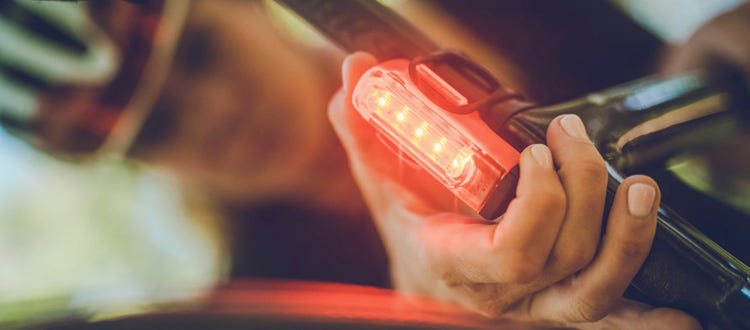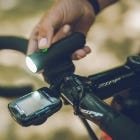Despite numerous awareness campaigns, public roads remain an unsafe environment for cyclists, both in daytime and nighttime.
While reflectors and bright clothing do help, cycling-specific lights are probably the single best investment in their safety one could make. Here is an overview of the different types of cycling lights and their uses.


Visibility Basics
Visibility is crucial, on the road or off. But using the wrong tool at the wrong time can be just as inefficient as not using any tool at all. For example, fluorescent clothing (such as bright yellow/orange), is great during the day, but useless once night comes. This is because car lights do not emit UV rays, which is what illuminates fluorescent colors during the day. The opposite is true for reflective materials – they light up nicely in the dark, yet are useless during the day. Combining the right visibility accessories with cycling lights is the best way to maximise safety.
Rear Lights
It is most recommended to use Daytime Running Lights, that is to say, lights which are powerful enough for use during daylight. Not all lights have this characteristic, and we believe it is an essential consideration, most importantly concerning road cyclists. Studies show that on average, it takes 400m for a automobile driver to come to a complete stop in a case of emergency. Some rear lights offer a beam strong enough to be seen up to 2 km out, thus increasing the driver’s reaction time window.
Rear lights come in a variety of compatibilities and with mounts made for saddlebags, rear racks and aero seatposts, there really is no excuse not to look into creating an efficient light setup.
Garmin has also created a very useful radar system called the Varia. It is both a very powerful rear light and a radar which displays cars as they pass by in real time, on to any compatible cycling head unit.
Front Lights
Often overlooked, front lights are a great for urban visibility as well as lighting up the road. It is important to note that a minimum of 500-700 lumens are required to efficiently light up the road as you ride but less is alright if you only seek to be visible. This is because the beam needs to shoot far enough to see what is coming when you are at speed.
They also serve the great purpose of allowing you to ride MTB and Fat bike trails in the dark, which is a completely immersive experience. Because of the possibility of rocks and roots, we recommend a minimum of 1000-1200 lumens for this application. Some MTB specific lights can reach up to 4200 lumens with an external battery pack.
Just as rear lights, they come in a variety of compatibilities such as helmet mounts and integrated GPS mounts.
In order to improve driver awareness towards cyclists, everyone must play their part. Following local laws, proper signaling and constant visibility, are essential steps in helping keep the road a safe place for cyclists. Your actions will contribute to a bright future for cyclists.
Don’t hesitate to consult our online or in-store experts to help you make an informed choice.










